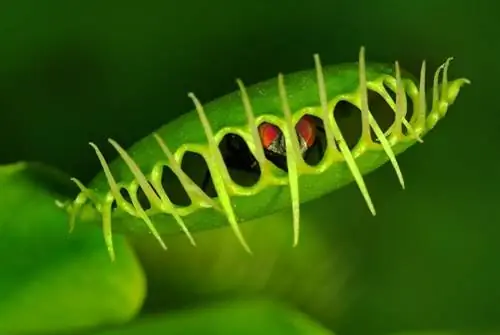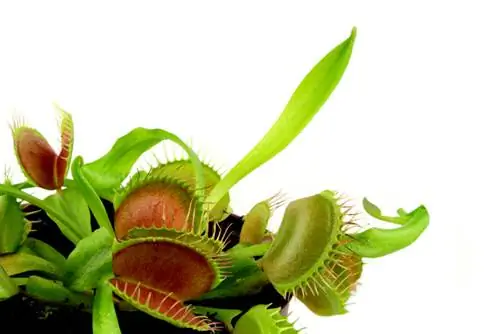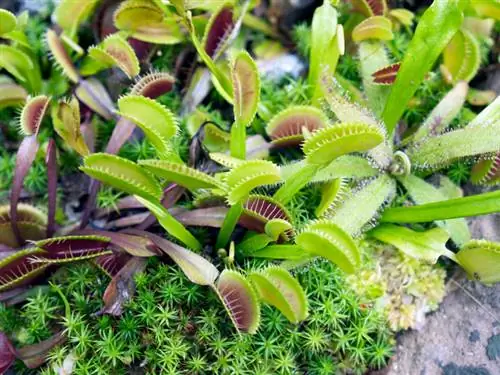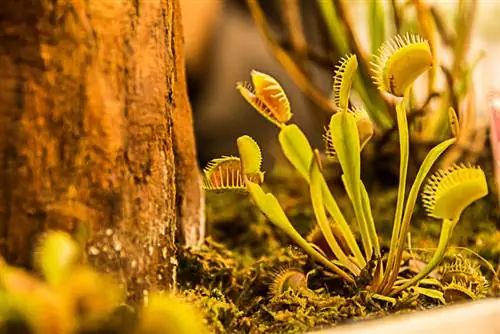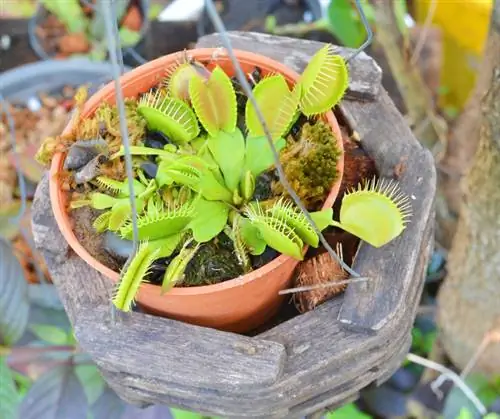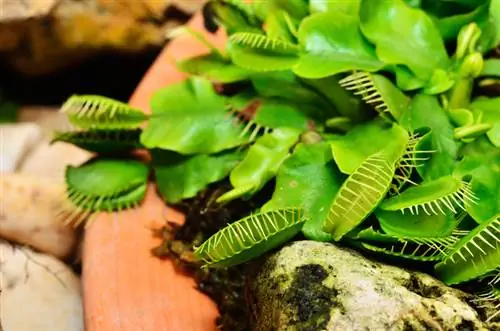- Author admin [email protected].
- Public 2023-12-16 16:46.
- Last modified 2025-06-01 06:02.
The most well-known type of carnivorous plants is the Venus flytrap. It impresses with its unique traps, so-called folding traps. This type of carnivore is unique and only occurs in nature in a very limited area of the world. Venus flytraps - a profile.
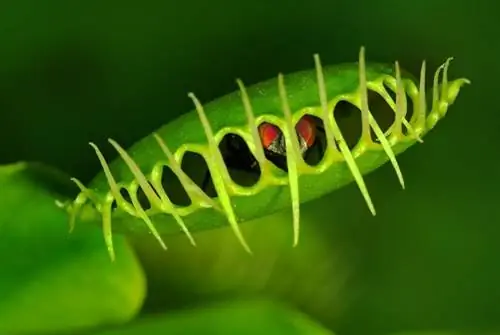
What are the characteristics of the Venus flytrap?
The Venus flytrap (Dionaea muscipula) is a carnivorous plant that grows up to 10 cm and is found in the Pocosin Moors in North and South Carolina. What's special are their green folding traps, which attract and catch insects, and their white flowers on long stems.
Venus flytrap - a profile
- Botanical name: Dionaea muscipula
- Plant family: Droseraceae (sundew family)
- Plant type: herbaceous, carnivorous (carnivorous)
- Species: only one species (monotypic)
- natural occurrence: Pocosin Moore (North and South Dakota, USA)
- Location: sunny, humid
- Size: up to 10 cm high
- Growth: develops up to 4 traps per month
- Age: up to 50 years
- Leaves: green
- Flowers: white flowers on stems up to 50 cm long
- Propagation: seeds, division, leaf cuttings
- Insect trap: folding trap
- Winter hardiness: only hardy in sheltered locations
- Use: Ornamental plant in the house, in the moorland over summer
Discovery of the Venus flytrap
Since the Venus flytrap only occurs in a specific location, it is not surprising that the carnivorous plant was first mentioned in 1759. It was discovered within a 100 kilometer radius of the US town of Wilmington.
Soon after it became known, this extraordinary plant began its triumphal march around the world.
This temporarily led to the Venus flytrap being threatened with extinction. The plant has now also been established in northwest Florida. Since Venus flytraps are easy to reproduce, the range of cultivated specimens is very large.
Weakly developed roots
The root system of a Venus flytrap is only weakly developed. First, a taproot grows that stabilizes the plant. This will regress later.
The roots grow up to 15 centimeters deep. If the above-ground parts of the Venus flytrap die, it often sprouts again from the underground rhizomes.
This is how the Venus flytrap catches insects
The folding traps have a red color that attracts insects. If you sit on the trap, it closes quickly and traps the insect.
The prey is digested by a digestive secretion. The digestive process takes about ten days.
The folding trap can open up to seven times and then dies.
Tip
The Latin name of the Venus flytrap Dionaea muscipula is made up of the name of the Greek goddess Dione (mother of Venus) and the word for mousetrap.

